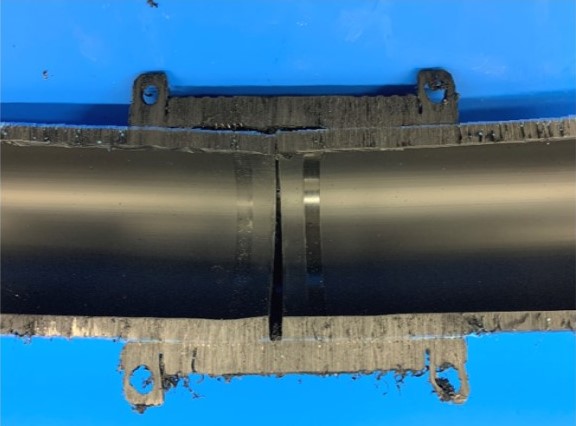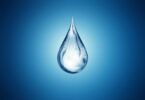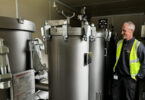Speed, simplicity, and flexibility are the reasons electrofusion has established itself as a popular and efficient welding technology for polyethylene pipes in the water and gas sectors. Despite this accessibility, however, installers who have not been properly trained or do not follow the simple yet necessary preparation process risk faulty pipe connections. Experts from GF Piping Systems Australia and Denmark share their experiences from working together with utilities and installers to provide insights on how to maximize the benefits of electrofusion with proper training.

A recent training session, hosted by GF Piping Systems, focused on electrofusion techniques and methods to avoid common mistakes.
As an Area Sales Manager for GF Piping Systems Denmark, Kim Rantzau is often curious when passing by worksites involving plastic pipes. What he sees while watching installers weld electrofusion fittings sometimes surprises him, however. “From using sandpaper to prepare the pipe ends to not aligning them correctly prior to welding, I have seen a lot of mistakes being made. This is very problematic as the preparation phase is essential for ensuring a high-quality and long-lasting weld”, he explains. This is due to the operating principle of electrofusion which requires two polyethylene pipes to be pushed into an electrofusion fitting. Within this fitting, copper wires are heated up by an external fusion machine so that the material of the fitting and pipe melt and then fuse together due to pressure buildup. This is a process designed to be simple and easy to complete, particularly with modern fusion machines that use bar code scanners to automatically select the correct welding parameters.
“The devil is in the details”, Rantzau adds. “In order for the weld to last, installers must ensure that the welding zone is stress- and contamination-free which is why preparation and alignment are so important.” After cutting the pipes to achieve the desired length, one of the crucial steps involves peeling away the top layer of the pipe ends and then cleaning the welding zone with specialized cleaner for polyethylene. But according to Rantzau, these steps are often not followed closely enough. “Some of our customers tell me that they have been successfully using a hand peeler the last ten years. When I take out our rotary peeler, which has been specifically designed for our electrofusion system, they don’t believe me at first that I can do a much quicker and better job.” The benefit of rotary peelers is consistency. In the case of GF Piping Systems’ electrofusion fittings, it is necessary to peel ≥ 0.2 mm of wall thickness to reliably remove the oxide layer which is created by environmental influences such as oxygen and UV radiation. Because of this, using hand scrapers or even sandpaper is not sufficiently precise. “In addition, using a specialized tool such as the rotary peeler actually speeds up the process, as it is much less physical and requires fewer workers – especially for larger dimensions such as DN100.”
In cases where pipe connections fail, GF Piping Systems frequently analyzes the electrofusion fittings at its headquarters in Schaffhausen, Switzerland. What the experts find is often unambiguous, according to Rantzau. “Typically, we can see a change in the material which confirms that there was enough heat and an even heat distribution during welding, and that the fitting is therefore not faulty. At the same time, they show clear signs of contamination.” While failed pipe connections cause downtimes and additional costs, they can also be dangerous, particularly when they occur in pressurized piping systems. “It can be quite frustrating, because electrofusion has been so successful in water and gas applications around the world and provides many benefits for installers.”

In order to remove the oxide layer on the pipe ends, it is necessary to peel ≥ 0.2 mm of wall thickness. Hand peeling often leads to inconsistent and inadequate results, as shown here.
But how do these issues arise in the first place? Thomas Waldeier, Utility Product Manager at GF Piping Systems’ Australian sales company, explains that there are several factors. “In rare cases, there are bad actors that simply ignore the welding guidelines which has led to increased scrutiny by authorities in Australia. However, most issues are the result of a lack of awareness.” Due to the straightforward and easy nature of electrofusion, wholesalers often sell the fittings as a simple commodity. It is only after the installers have acquired the fittings and rented an electrofusion machine that GF Piping Systems receives a call. “Particularly smaller companies need additional assistance. At first, they think this is plastic, it can’t be that difficult. But eventually, they ask us questions about what types of wipes should be used, or whether hand peeling is acceptable.”
GF Piping Systems’ sales companies have not been idle, however. “It is clear to us that product-specific training is indispensable to support installers”, Kim Rantzau emphasizes. But this is not always easy for a company operating globally. “In Denmark, you need a certificate to weld pressurized steel pipes. For PE pipes and electrofusion, there is no consistent standard. Some installers don’t even have an electrofusion-specific welding certificate.” According to the sales manager, this lack of a standard is strengthened by the fact that some pipe manufacturers claim that their pipes do not need to be peeled prior to welding. To improve the situation, GF Piping Systems Denmark has been working closely with customers to support them if they need it. In Australia, the company also offers training, either at its facilities or on-site, and provides a detailed checklist for the installation.
Existing training standards, such as the European EN13067:2020, provide detailed guidelines for the installation methods of specific systems or materials. These standards ensure consistency and quality across installations. However, in the DACH region, professionals must undergo additional training to meet these strict requirements, reflecting the high standards expected in these countries. Despite these regulations and training requirements, the actual enforcement and inspection of installations to ensure they meet standards can be inadequate. This is particularly evident in the gas sector, where continuous traceability results in higher processing quality compared to drinking water installations. This indicates that despite clear guidelines and trained professionals, quality control during and after installation does not always meet the highest standards. Consequently, GF Piping Systems is currently developing a global technical training program aimed at standardizing training programs across all 28 of its training centers. This Global Technical Training is intended for professional installers, ensuring they stay informed about the latest jointing technologies and installation methods., as Kim Rantzau explains. “In many ways the industry has not yet recognized that installers working with plastic pipes require a differentiated set of skills. We are therefore seeing an increasing demand from customers for their installers to be trained by us. By creating a global standard of quality, we are confident that we can empower these installers and ensure a fast installation with minimal maintenance.” For better inclusion, the Global Academy will also feature a digital platform designed to easily transfer and share knowledge, opening the training program to more people.
Head of Global Sales Support Lasse Kouva shares some details: “We are seeing an increasing demand from customers for their installers to be trained by us. With our advanced machines and products, proper training ensures fast installation with minimal maintenance. Recognizing the urgent need for skilled training, we are offering certified courses for professionals to ensure proper installation. These certificates are backed by GF Piping Systems and the Swiss Association of Plastic Pipes and Pipeline Components (VKR) in many countries. In other countries with existing official governmental regulations for welding, we ensure that our training adheres to international standards.”
Kim Rantzau is also convinced that this is the right approach. “While we cannot offer official welding certificates, our platform will allow us to educate installers about our products and installation methods with a company-specific certificate. Next time we see workers using sandpaper on-site or receive calls about how to use the fusion machine, we will be able to provide a solution in the form of the Global Technical Training.”








